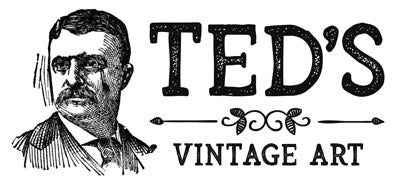Nebraska Maps
The midwestern state of Nebraska, known for its farming and agriculture, became a state in 1867. Today, there are countless vintage maps that spotlight the history of its cities, counties, and regions.
In our archives, you’ll find old maps for the cities of Lincoln, Kearney, Nebraska City, Omaha, and Norfolk. Plus, we have maps for the counties of Lincoln, Jefferson, Burt, Adams, Wayne, Dakota, Antelope, Hamilton, Howard, and Stanton. And we also have beautiful state maps, such as a 1931 Nebraska map that’s been digitally restored on museum-quality paper with archival ink.
To browse our collection of vintage Nebraska maps, use the menu in the upper right of this page to sort by popularity, average rating, latest additions, or price.
If you’re looking for a specific Nebraska map that’s not available here, contact us. We will gladly check our archives for you.
In Nebraska, agriculture (predominately cattle production) is the state's #1 industry. Beef production touches just about every Nebraskan in some way, and interestingly, the cow to human ratio in the state is approximately 3.5 cows per person. The cattle industry began in Nebraska in the late 1800s. The state’s vast prairies attracted early settlers. They discovered the prairies were perfect for cattle grazing, and once word got out, the population grew fast.
Nebraska is also home to business giants like Berkshire Hathaway (led by CEO Warren Buffet), Union Pacific Railroad, TD Ameritrade, and outdoor retailer Cabela's.
Although Nebraska is often overlooked as a travel destination, it has plenty of character, unique sights, and natural attractions.
For example, the Henry Doorly Zoo and Aquarium in Omaha is a fantastic place to visit because it's where you can experience the world's largest indoor desert, indoor jungle, and nocturnal exhibit.
You’ll find picture-perfect scenery at the Chimney Rock National Historic Site. It features a 480-foot dramatic rock spire formation that's about 25 million years old. In the mid-1800s, pioneers used it as a landmark while heading westward.
Railroad enthusiasts won't want to miss the Golden Spike Tower that looks over Bailey Yard, the world's largest railroad yard. And for those who love quirky roadside attractions, Nebraska is where Carhenge (a duplicate of Stonehenge created with cars) is located.
When it comes to living in Nebraska, if small-town life appeals to you, there are plenty of places in the state for you to consider putting down your roots. Most of the state's cities, about 89 percent of them, have fewer than 3,000 residents. If you prefer a more urban lifestyle, there's Nebraska's capital, Lincoln, and the larger city of Omaha. Famous people from Nebraska include dancer and actor Fred Astaire, former U.S. president Gerald Ford, actress Hilary Swank, and civil rights activist Malcolm X.
Finally, did you know the official soft drink of Nebraska is Kool-Aid? A man named Edwin Elijah Perkins invented Kool-Aid in 1927 in Hastings, Nebraska. If you visit the Hastings Museum, there's an exhibit that explores the origin of Kool-Aid and includes memorabilia and artifacts.

Real Stories From Past Customers
From The Vintage Map Blog
Vintage Map Gallery Walls: A Perfect Decor Idea for Farmhouse & Country Homes
A vintage map gallery wall is the perfect way to blend history, personal memories, and timeless decor. Ideal for farmhouse...
Need a gift for the genealogist in your family? Complete the story with vintage maps!
Family history is more than names and dates—it’s the story of where we come from. A vintage map beautifully connects...
The Best Real Estate Closing Gift: A Vintage Map of Your City
Struggling to find the perfect real estate closing gift? Skip the generic branded swag and give your clients something they'll...














































































































